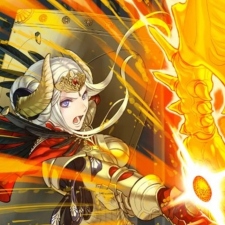Today marks a major milestone for Nintendo and Intelligent Systems - namely the seventh anniversary of their most successful mobile game, Fire Emblem Heroes.
The mobile spinoff in the long-running Fire Emblem franchise launched on February 2, 2017 and still burns bright today where many other Nintendo mobile projects petered out, building itself an indubitable legacy with more gross revenue than any other game in the series’ history.
Having played Heroes since day one, I’ve followed the game through its ever-evolving gameplay, metas, and even genres to stay relevant in a gaming landscape so different today than it was in 2017. It’s a bizarre place to be, seven years on, looking back at the launch of a mobile game in one of my favourite franchises from such a different part of my life.
I’ve seen how Heroes catered to longtime fans and newcomers from the start - how it drew in school friends at the time who owned no Nintendo consoles and had never heard of Fire Emblem before, but have since become main series fans - and I’ve carried this evolving bundle of genres in my pocket through finishing school, university and beyond.
For some perspective, across Fire Emblem’s 34-year history, Nintendo Switch title Three Houses has seen the highest sale numbers and is in fact the best-selling strategy RPG of all time, but even that accolade only equates to 4.12 million units given the genre’s somewhat niche status. For a $60 game, that puts Three Houses’ gross revenue at $250 million (at a rough estimate), and hypothetically, even if every player bought the $25 DLC that would only bring the estimated total to $350 million.
By comparison, Fire Emblem Heroes has generated over $1 billion to date.
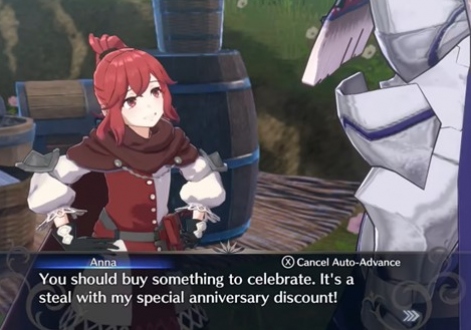
It’s safe to say, therefore, that Fire Emblem has found a comfortable home on mobile - more so than even the world-renowned Mario IP, with Dr Mario World having shut down while Super Mario Run and Mario Kart Tour have ceased new content updates.
Fire Emblem Heroes, meanwhile, has maintained a fortnightly update schedule for seven years now with no signs of slowing, and has continued to successfully monetise its relatively small playerbase with evolving mechanics and a variety of incentives to keep its players spending.
Back to the start
Back in 2017, Fire Emblem Heroes set out to be a place to "throw down the gauntlet anytime, anywhere", uniting legacy Fire Emblem characters from across the series’ history into armies of four with a limited amount of PvE content to tackle, in retrospect. Every map was an 8x6 grid "designed to fit on a smartphone screen" - demonstrating from the beginning that this really was a game made for mobile.
The core gameplay formula carried over from the main series with RPG mainstays like levelling up characters and unlocking new skills combined with turn-based gridded battles with simple objectives like clearing all enemies from a map; these later expanded with new requirements like surviving for a certain number of turns, or clearing multiple maps in a row with the same army of four.
On the monetisation side, spending revolved predominantly around Heroes’ gacha mechanics, with orbs collected through log-in bonuses, missions, and clearing game modes. These orbs act as the game's premium currency and are used to summon characters. Of course, players could (and still do) spend money to access even more orbs, thereby enabling them to summon more frequently.
In the fledgling days of 2017, the reasons to summon were much simpler. Players either summoned in hopes of unlocking their favourite characters from the main series with new artwork, or to unlock the strongest characters at the time, or just for the thrill of a shiny new unit.
In my case, my initial goal was to summon the sword-wielding mercenary Laslow from the then-latest main series game, 3DS title Fire Emblem Fates. And once I unlocked him, he wasn’t all that great… His stats were good but there were other sword users with better skills, making them objectively better choices for clearing content.
It didn't take long for Heroes to offer a game-changing solution in the form of a new mechanic: skill inheritance. By allowing players to consume one character and give their skills to another, Heroes empowered fans to spend premium resources on new units they didn’t care about - using up said resources to give better skills to their favourites. This change has proven ingenious and is still a core mechanic seven years later, encouraging fans to keep summoning for new characters even if they’ve had a robust team for years, since the new releases often come with better skills they can pass along.
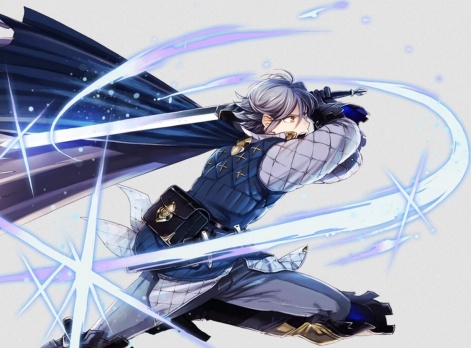
Of course, in classic gacha fashion, new characters release regularly with Heroes launching a new banner of four units every two weeks on average. Many of them are added to a general pool after the event but others are only available for the limited time their banners run, generating a sense of urgency if players want the latest units and their top-tier skills, and making them increasingly likely to spend for orbs in order to keep up.
Heroes even hosts a yearly "Choose Your Legends" competition where fans vote for their favourite characters, with the top scorers guaranteed to get a new alt that year while also giving Nintendo and Intelligent Systems a good idea of who else might bring in some extra cash.
But of course, building characters new and old would only go so far in seven years if the gameplay stayed the same, so Heroes has adapted with plenty of different game modes to maintain player retention…
Genres galore
Fast-forwarding to 2024, Fire Emblem Heroes has become so much more than a strategy RPG; whilst maintaining that core Fire Emblem formula in many modes, it also cycles through side content leveraging a whole host of popular mobile mechanics and genres, be that a rhythm game mode introduced in 2018, raids in 2019 or an auto battler in 2020. The latter remains the most prevalent of the three today with the auto battler genre continuing to prove popular across the industry.
Heroes has an idle game mode too, and a farming simulator, and a cooking mini game, and community-based competitive modes, and on and on the list goes… Indeed, it’s reaching the point where Heroes offers every genre in one, giving everyone a different reason to play the game. And of course, characters have different strengths and weaknesses across the various modes - meaning a powerful team of four for the story might perform poorly in auto-battle challenges, or need newer skills in PvP.
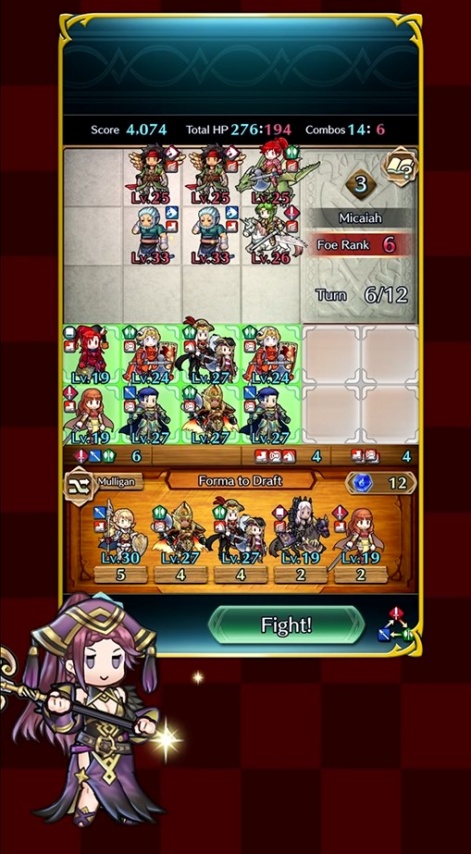
So, yet again, Nintendo and Intelligent Systems have fine-tuned incentivising player spending. Perhaps the best example is Resonant Battles - weekly challenges taking place on bigger maps that only allow characters from a rotating duo of games to participate, meaning players are only able to play and earn rewards provided they’ve summoned and built a team from that week’s represented games.
Therefore, players must summon for characters they may not even know - from a 90s Japan-exclusive SNES game, for example - to keep up with the latest content, or else miss out on rewards that could then be invested back into the characters they do know and love.
And, as is increasingly popular in mobile gaming these days, Heroes has also introduced an optional subscription service to keep spenders spending each month, encouraged by the allure of free characters, new artwork, extra premium currency and more.
Once again, this strategy game clearly has its monetisation strategy down to a fine art, too.
Celebrating seven years
In addition to its own revenue stream, Heroes has often been used to push sales of the main series on console. This was seen with Echoes in 2017, Three Houses in 2019, Three Hopes in 2022 and most recently Engage in 2023.
And the Engage push is continuing into the new year, with Heroes’ seventh-anniversary celebration revolving around new alts from the game. This includes a new type of unit called an Emblem Hero introduced via Emblem Marth: an embodiment of the series’ original protagonist as he appeared in Engage, now back again in Heroes.
If summoned via the gacha, these new Emblem characters can "engage" with any other character a player chooses to provide a stat boost and yet another new skill, once again encouraging fans to spend to keep their favourites relevant in the ever-evolving meta. Furthermore, the more times an Emblem Hero is summoned in the gacha, the more powerups another character can gain in stat buffs.
The reasons to spend really do keep on stacking up…
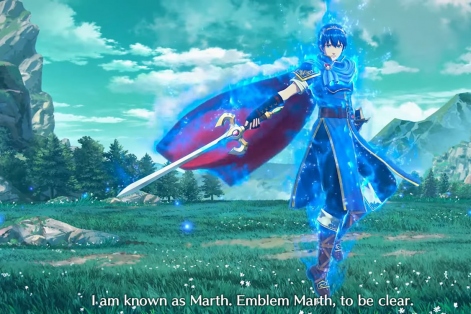
As a fan since day one, it’s been clear to see how much Fire Emblem Heroes has iterated and evolved over the years, experimenting with new genres and bringing on plenty of new content that could, admittedly, be overwhelming to newcomers at this point. Even so, with the wealth of game modes available, there’s always somewhere to find premium currency as a free-to-play player, and there’s always plenty to do with your unstoppable army as a big spender.
In short, Heroes is a success story. The success story. As the highest-grossing Fire Emblem game and Nintendo’s most lucrative mobile release, Heroes has surely reached greater heights than Nintendo ever anticipated back in 2017 - when the Japanese games maker was only just dipping its toes into such a vital part of the industry.
Whether or not Heroes was ever expected to last until its seventh anniversary, let alone soar, I for one am glad that it has, and intend to carry on building up my favourites through all the anniversaries to come.

